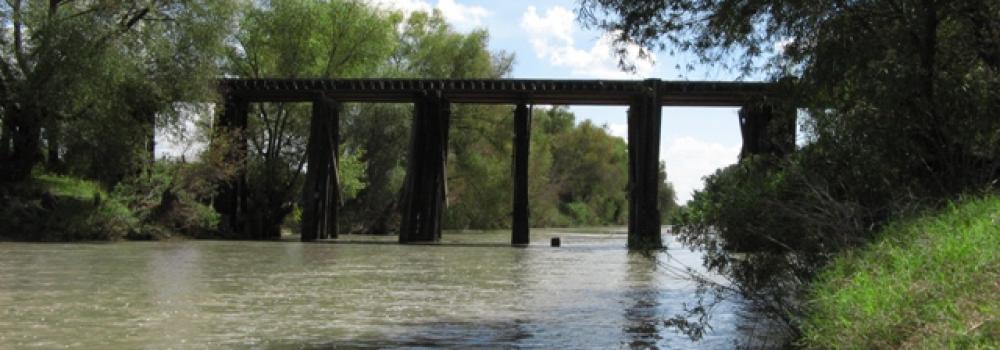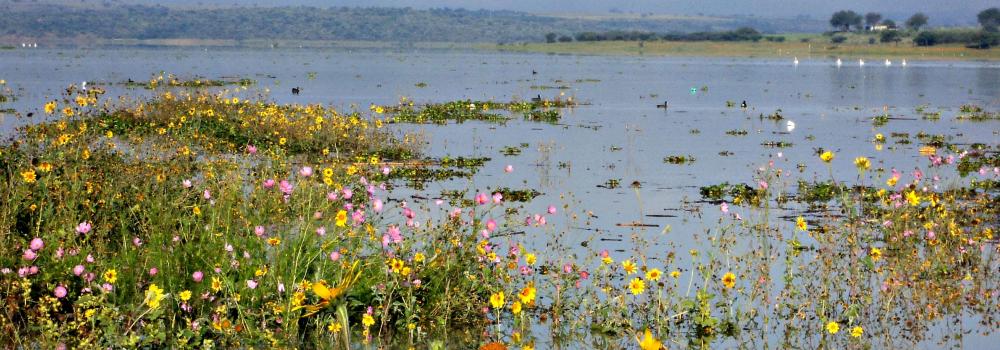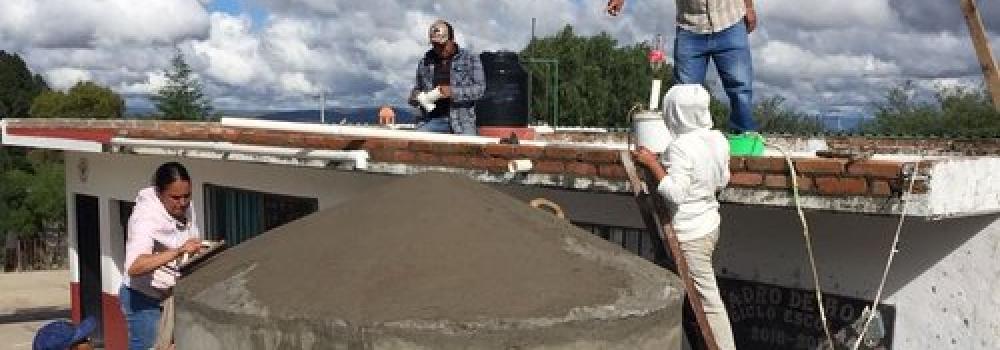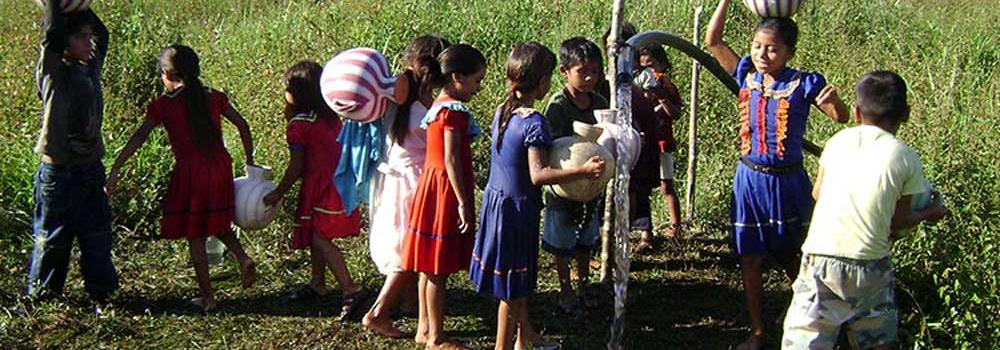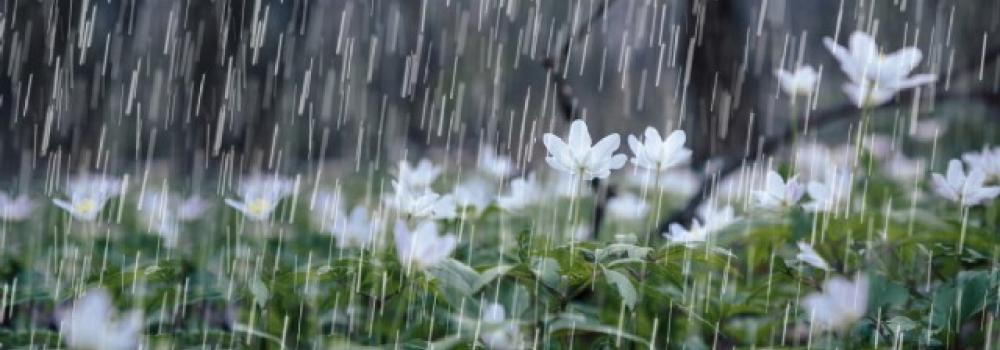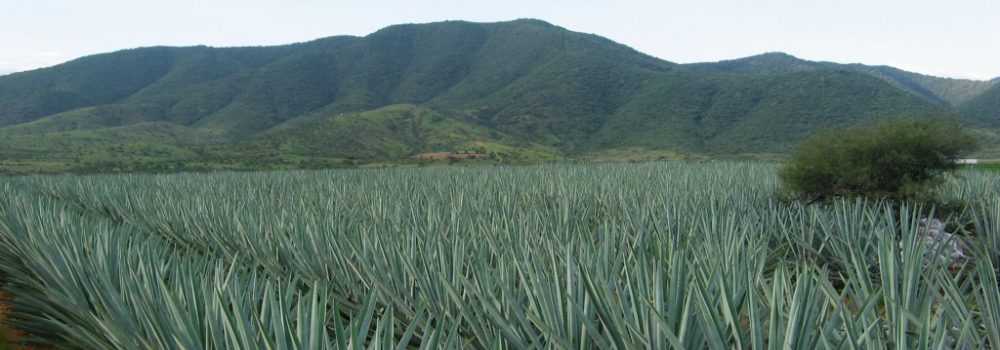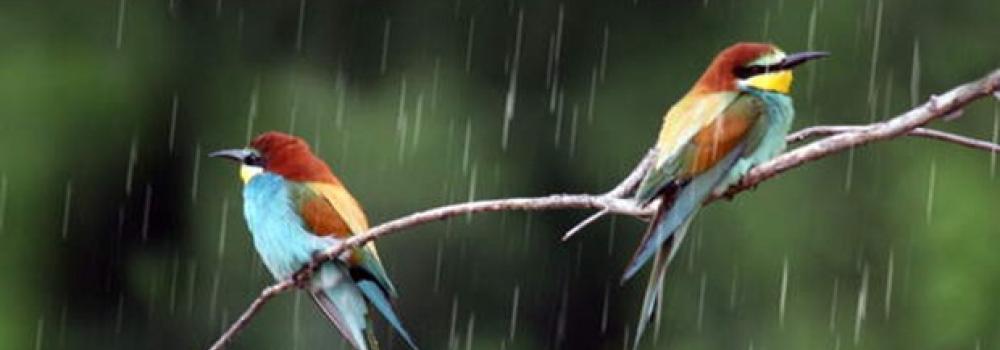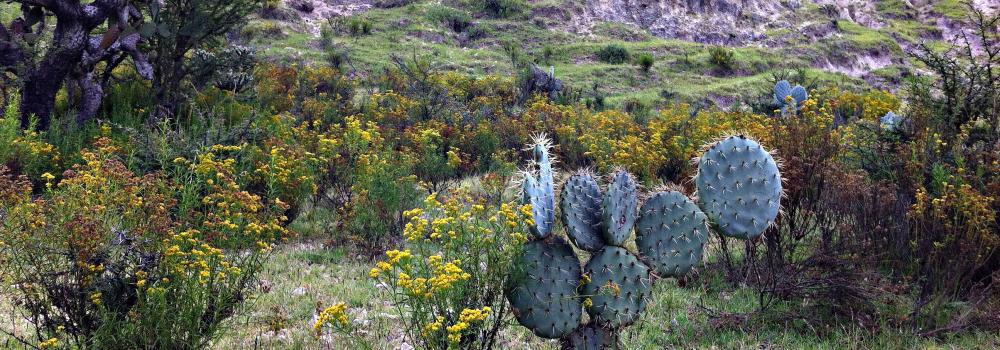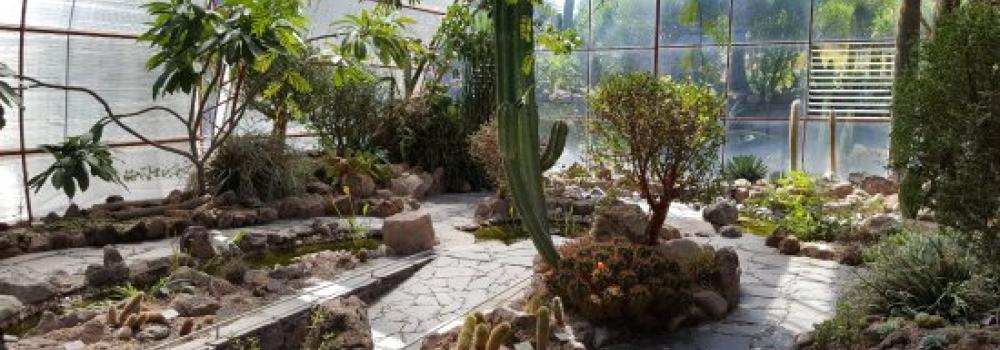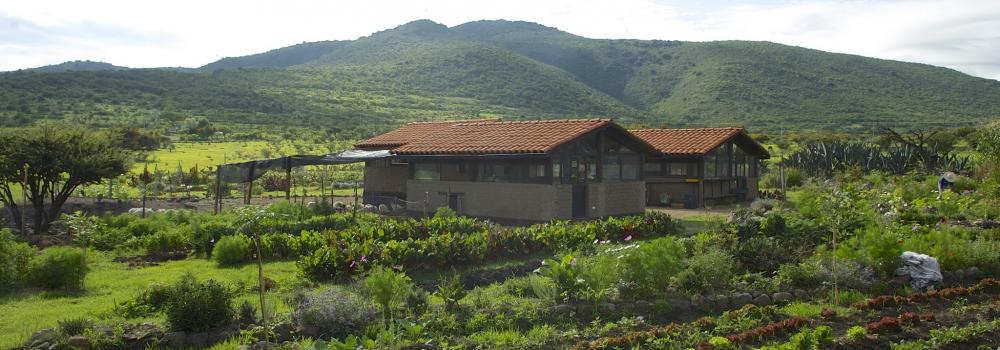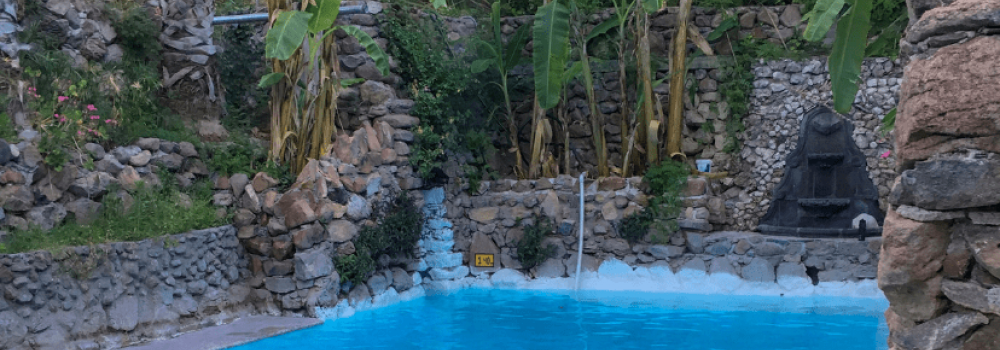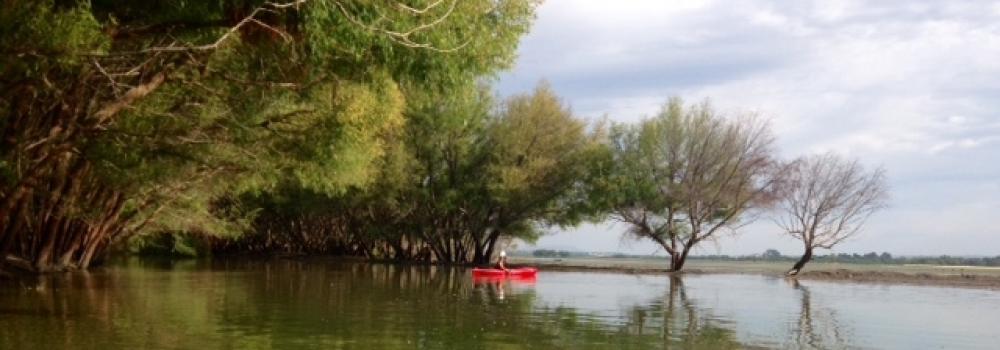Environmental education and conservation campaigns are common strategies to promote Water Culture. However, one aspect that we´ll be simultaneously addressing are the gaps in building regulations to promote the rational use of water from the very conception of the architecture design. This is reflected in the low-income housing developments and residential .
To close the Water Dialogues series Mr. Edgar Abelleyra Cordero, Head of the Watershed Council and Social Emergency Management of the National Water Commission, Guanajuato, will be participating along with Madaí Fernandez Correa, head of the Water Culture Program of CONAGUA/Guanajuato and environmental architect Armando Deffis Caso.
With an MBA from the Instituto Tecnologico de Estudios Superiores de Monterrey, Campus Querétaro, Mr. Abelleyra has 23 years implementing water policies and social organization. From 2009 to date he is a member of the Leading Group for the Integrated Management Plans of the 20 aquifers of the state of Guanajuato.
Madaí Fernandez Correa has a BA in Regional Development from the University of Guanajuato and is also President of the Organization for Integral Regional Development AC and leader of the Guanajuato Water and Education Program for America and the Caribbean. Among her acknowledgements is the National Community Service Award, given by the University of Also, environmental architect Armando Deffis Caso, who will address the alternatives for conservation and water reuse in urban households, is an expert in sustainable development and planning techniques in architecture and urbanism.
He founded the Environmental Architects´ Society of Mexico in l986 and his knowledge and expertise have led him to teach courses throughout Latin America and write 18 books on the subject. He has designed ecological resorts and 300 housing units. Recently he developed the technical standards for the Housing Institute of Mexico City. Moderating this last Water Dialogue is Patricia Cardona Lang, Coordinator of this annual series along with Agustín Madrigal and Mauricio Sanchez. Writer, teacher and performing arts researcher for the National Council for Culture and the Arts, (CONACULTA) Ms. Cardona is the author of several books on Theatre Anthropology and teaches seminars and workshops in Mexico and Latin America. She was an art journalist for more than 25 years in Mexico City and spent over 10 years in environmental journalism, founding in l989, along with photographer Christa Cowrie, the first environmental magazine where the architect Armando Deffis Caso became one of her top The Water Dialogues series, which come to a close today, invited over the past 8 months scientific and technical experts, as well as public officials, in order to gather updated information on the management and use of water in The audience has had the opportunity to exchange ideas with representatives of CONAGUA, the State Water Commission, the operating agency SAPASMA, NGOs and universities providing expertise, clarifying doubts and filling many gaps. To all of them our deepest gratitude.
We also thank the members of the Citizens’ Observatory for Water and Sanitation, Cesar Arias, Enrique Orvañanos and Mario Hernandez for having supported us participating in our tables.
Finally, we wish to express our gratitude to the University of León for being our hosts and giving us full support. The presence of college students in this cycle has also brought new audiences and we hope to further strengthen this.
Patricia Cardona: These Water Dialogues have given us enough information to be able to establish in the near future a series of working groups to resolve unfinished tasks. You can all find the bilingual transcriptions of the Dialogues in our website where you can check all the information that now requires further attention. Our purpose is to invite stakeholders from different sectors to address the actions that can strengthen the water culture in our region.
I wish to remind you that the Water Dialogues have also invited the university students to participate in a contest and the results will be announced in the month of April 2014 .
We feel it´s fundamental to close this Water Dialogues series presenting the finalists and winners in a public debate. The voice of the young students must be heard concerning the water issues. We will also invite Dr. Marcos Adrián Ortega to address the youth, so as to strengthen research endeavors and useful projects for the region.
And now, to begin this Dialogue on the Water Culture Crisis I would like to refer briefly to the significance given to this discussion. The word “culture” originally comes from the Spanish word cultivo referring to agricultural crops.
The cultivation of the land is what sustains us, but the cultivation of the soul, a term coined by Cicero in the First Century BC, is what helps us overcome barbaric tendencies. Today we wonder if this cultivation of the soul has yielded the expected results because what we experience as humanity in general is an extreme situation of immediate survival. And barbarism spreads across the planet like a plague.
That’s why we’re here, to rescue that cultivation of the soul that allows us to think of a water culture that encourages the conservation of rivers, understands the surface water and groundwater as unit, allows us to manage the water resources for the present and future generations, to respect water as a human right and not as marketing target, to conserve the water quality and natural systems by controlling pollutant loads, avoiding consumption abuse and promoting water reuse, a practice into which we
Edgar Abelleyra: I work at the National Water Commission and the perception of a public servant can often be distorted. I have a rather critical view regarding the government´s vision on water culture practices. It´s a very short vision which began as a health program to prevent gastrointestinal diseases. Today we give the population a decision-making status, with specific actions to improve water conditions, especially where pollution, overexploitation and poor water distribution are at issue.
We have all of these problems in Guanajuato.
The national strategy on Water Culture has evolved because of the pressure made by the public and local governments. We know this issue is part of our public policies, but the budgets are scarce to promote a true water culture.
Nor do we find a clear vision in the water authorities. We had to find ways to destroy the institutional inertia. We are promoting the idea that the operating agencies such as SAPASMA, NGOs and educational institutions, as well as water users and young stakeholders,
propose alternatives, specific projects to participate in water culture We are creating new opportunities within the institution where we work. Before we couldn´t mention the term water culture if it was not directed to children only. I agree that children can be great Water Watchers, but also individuals from different sectors can make a commitment as well. The industry is a key sector that can influence its clients to become water conservationists. Another important sector that is not integrated to the institutional water culture program is agriculture, the major water consumer.
There are many ways to train the farmers to be efficient. It is not just applying new technology, but creating a new consciousness regarding water consumption. You have to change the “bad practices” of irrigation to improve things. At the same time we must keep track of these changes to ensure they We also involve universities in promoting technological and socio-cultural research as well as policies to improve citizens’ awareness.
Rather than give talks and lectures in all institutions, we believe in strengthening the water culture programs of operating agencies by funding projects and certifying their water culture promoters.
In Guanajuato we have developed many strategies that don´t exist elsewhere. The National Water Commission is very paternalistic giving out financial resources. We believe in supporting projects along with building capacities and establishing linkages between different actors.
Another great advantage we have in Guanajuato are the networks formed with the water culture promoters of different institutions. This means they no longer work alone but with the support of universities, NGOs and other municipalities and states. This expands the narrow institutional vision and adds to the practices and ecotechniques already functioning in the communities. These are activities that we want to support, publicize and reproduce in other parts of the country.
I encourage young people to participate, to question the authorities, to commit to specific projects as we are experiencing the greatest exploitation of the aquifers in our history. Government decisions alone will not solve the problem. Political decisions are not enough to bring about change we need.
Madaí Fernández: I want to focus on the ancestral origins of our water culture. Formerly the life forces or divinities came from the water, the earth, air, fire and of course, our sun. But we have forgotten that connection. Our public policies that create that relation once again, are only a reflection of that essential origin we are In the community of Macuapa, which means “a place of salt water and land”, of Chichimeca background, in the state of Guanajuato, there was a magical spring whose protector was known as the Water Chan.
There was another powerful force that whenever there was a dispute over water, he dried the spring. What happened to this particular community, regardless of the myth?
They started with the groundwater extraction until the spring lost its flow. A resident of that community, Jorge Salgado, said the spring was sacred. “This place would move when we were dancing because of the water below.
We felt how the ground moved, as if we were floating. In fact, there were small pools, the spring had lots and lots of water. But some disputes began over the water and this powerful force was angry and the spring dried.
There´s no more water left. And there´s no longer a tradition that keeps us together. It disrupted everything. There is nothing here anymore.” When the spring dried out, there was no reason for the dance rituals anymore, so there is no tradition. People are beginning to move out and there is much frustration. When we visited this community, we found they already knew that water is a human right. Not only because of the myth but because the water belonged to the entire community. When the wells were drilled, people began fighting over water and the community had to organize differently in order to pay for the operating costs the water services require.
The water we consume every day doesn´t cost a dime. What costs is the service and the water treatment. So we don´t value water as such. Many communities are left without water because it needs to be sent to Mexico City where it is terribly contaminated.
All ecotechniques like harvesting rainwater and other practices come from ancient times. With the population growth we stopped connecting with nature so consumerism and exploitation took over. Now it seems that we have to start from scratch to save water, which also involves the timely payment for the service we get. The operating agencies don´t have the revenue that is required to provide quality services. However, there is a growing population demanding more water.
Now all the rivers are polluted. Many are dead. And children now ask: How come you ask me to care for the water since as long as I can remember all A vertically – imposed public policy never works. And that’s the problem we face today with our water culture program.
Originally focused on children, the water policies ignored the fact that all the polluters are adults. We now understand that information and research are essential so all this knowledge, translated into efficient technology, can solve the problem. A true water culture leads to integrated resource management. If the population is not well informed, we can hardly approach the institutions correctly.
Currently there is an institutional guideline that aims to increase the scientific and technological capabilities of the water sector. So we keep insisting on modernizing our services, as if they were opposed to the social outlook. But we decided to involve the educational institutions in order to create programs that promote awareness in the public consciousness. For example, do people know that the aquifer is overexploited and what is being done?
We need to generate continuing education programs and certification for the In Guanajuato we certify water culture promoters. That is, in each operating agency there must be a qualified person to do this work. We only have 60 promoters statewide to attend millions of people. They organize campaigns for the youth, they do social work with the children and adults because there are no human or financial resources. We only have a budget of a million and a half pesos for promoting water culture in the state, while for large infrastructure projects there are 100 million pesos. But this infrastructure is not sustainable because it´s very costly.
Every community wants drinking water and sanitation services which contaminate the water even more. Public policies must integrate ecotechniques for water conservation. Otherwise we´ll continue wasting those financial resources in contaminating technology. Our water management is not being productive enough.
What we seek in the younger generation is to promote research, new inventions and the rescue of traditional sustainable technology. Industries are only interested in making profit rather than promoting innovating ideas to protect our natural resources.
In conclusion, our institutional water culture programs are weak and are failing to create networks with other areas of urban development. There are many conservation and environmental education programs, but they are not All this requires the accountability of the operating agencies. Don´t be indifferent. Don´t fall into the vicious circle of committing violence against ourselves. Participate in our programs, share valuable information at home and with your friends
Armando Deffis: I have come to share with you my experience in relation to urban development and issues that have been mentioned here. I want to propose very specific strategies for you to grow as a group. I think the water problem is political and technical. We’re talking about water institutions with which I have been involved for 35 years.
The first proposal I made to a water institution —before the existence of CONAGUA— for the rain reinfiltration into Mexico City´s aquifer was never taken into consideration. They never listened to me. The government always makes decisions from above. This country supports presidentialism.
Here in San Miguel it is easier to influence policies and water management if you as a group are convinced of what you want. San Miguel has had water problems since the beginning. It was founded in 542 because there was a spring called El Chorro. For 400 years the water was never piped nor distributed. San Miguel Allende grew and everyone ignored this situation. In l947 the first water distribution network and sewage system was created. After 10 years it stopped serving its purpose.
The operating agencies were totally inefficient. So they began drilling wells, which are now deeper and deeper. What do the water “experts” have to say about this? They belief that to recharge the aquifers is a very slow and expensive process. I say the contrary.
I have done many rain reinfiltraciones. I was the first one to do so in a housing project for 2 thousand 500 homes in the southern part of Mexico City, which is at the rocky base of the Chicle volcano. All the water institutions opposed this project.
I had been a public official for a housing institution so I had many friends in the delegation and different strategic places who helped me finish this project which is now an example for the whole country. President De la Madrid inaugurated this housing development and that day I brought two pipes with 10,000 liters of water each and showed them that of course, you can do it, you can reinfiltrate the aquifer if you know the technology. We emptied the two trucks on the water filter —because the water going into the aquifer must be filtered—, and after 3 minutes there was not a drop left. Much money was saved in pipes and the aquifer was recharged.
Today I brought a study I did for San Miguel Allende in l986 and the mayor did not want to see it then. Why do politicians do this? Because the water problem is underground. Nobody sees the pipeline under the earth. They prefer to spend millions making a monument to the Pípila instead of improving the water supply for San Miguel Allende. How can you change that attitude in the authorities?
Through people like you. One panelist in these Water Dialogues said almost half of the water in San Miguel is lost through leaks. The only ones that can do something about it is you.
I also wish the universities participating here to consider the water problem as a priority issue for careers such as architecture, engineering, among others. Urban growth demands lots of water and you have to start dealing with this now.
The ecological problem is an issue for all sciences and fields. It The research I did in l986 for San Miguel Allende in relation to the water problem hasn´t changed a bit. Pretend it´s the same situation now. I also brought my book for sustainable housing projects with technologies that don´t use commercial energy. I also brought another book with the technology to reinfiltrate water in housing developments.
I’ve done about 300 housing units with the reinfiltration included. Rain reinfiltration wells are relatively inexpensive. I explain in detail how the filters are made and how the digging is done and how the filters are kept.
I hope this will help your plans for San Miguel de Allende. I include in this package a water saving plan, a plan for reusing gray water, for water harvesting and sewage treatment. These studies were made for the Mexico City Housing Institute and became standards for buildings and housing units. It’s not unrealistic that this can be easily done in San Miguel de Allende.
The topographical conformation of San Miguel de Allende, if studied carefully, has strategic locations for rain reinfiltration. We know now that large dams are not the best solution to the water problem because of evaporation, the aging process and many technical issues to be resolved.
Ask Dr. Jose Huerta, another panelist in these Water Dialogues, for the mathematical models of Guanajuato so that when you go to the mayor, your information is indestructible. You must also consider the political costs and benefits. You must use these instruments for persuasion if you don´t want the authorities to make fun of you.
Your water campaign must be dealt with as if it were a political campaign, as a water revolution. More infrastructure, more dams, more pumps will not solve the problem. Let´s go back to Mexico City: there are 500 kilometers of pipeline, more than 20 chlorinating plants plus pumping stations, and 15 percent of the country’s energy is spent on pumping water because the population is exactly where there is no water underneath. And on top, Mexico City´s altitude is 2 thousand 250 meters. It used to be a lake and now it´s a cistern covered with streets, buildings and it´s never recharged and it´s running out of water.
We spend a huge amount of money bringing water to the city and like in San Miguel, the pipes are broken and we waste about 15 percent of the water through leaks. So your next step is to get official non- profit status, then get all the technical and ecological studies you can find so you can deal with the water problem from a social, technical and political perspective. Establish financing mechanisms and create fundraising campaigns inviting banks, institutions, associations. This must be seen as a political campaign. Sustain an ongoing clear information program for all the economic strata living in this region. Penetrate all schools. You need to invite the engineer and architecture schools to do research on water.
One of the key points here is to consider the water laws. All urban developments that are not complying with regulations and codes are abusing in water consumption. In the state of Mexico, you can find the Book Five of the Administrative Code which can be taken as an example.
It requires builders to successfully resolve water infrastructure before obtaining a license from the OAPAS (Organismo del Agua Potable, Alcantarillado y Saneamiento). This should be done here as well, and made even stricter.
Instead of allowing 200 liters of water per person, it could be cut in half if the water is recycled, treated and ecological 6-liter toilets are installed.
I’m working on a housing project for 900 homes where you can return to the aquifer 92 percent of the water to be used. We´ll also capture rainwater and treat the waste water. So yes, you can do it!
Question from the audience: I´m Isela Torres from the Technological University of Querétaro. I would like to congratulate you and ask for a copy of the study you did for San Miguel de Allende. We also want your books.
Armando Deffis: All this information is on my website http://www.armandodeffis.com.mx. Also, the information on San Miguel will be scanned and found in the Aguavida SMA web site: www.aguavidasma.org.
Question from the audience: Mr. Abelleyra, you said you disagreed with some of the CONAGUA´s policies. Could you give an example?
Edgar Abelleyra: I agree a lot with architect Deffis. Our water policy has focused on the construction of large dams and projects that are less and less sustainable. These policies have little vision and a high cost for the environment. All the CONAGUA´s policies are in this direction.
My own view is that public policy should be comprehensive and sustainable. And this should be applied to every institution. There must be an agreement between institutions so that all development policies involve all sectors and users but from the perspective of micro strategies. Each house and each colonia should have its own conservation strategies, rainwater capture and water reuse.
Communities must be self-sustainable and we are not doing that. Each rural community wants us to dig a well and build a good drainage system and install tanks for water reuse that generally do not work because CONAGUA does many things theoretically, but without a realistic vision of those they support. We don´t consider whether rural communities even have the economic capacity to operate the drinking water systems we install.
These strategies are inadequate and we are not doing anything to reverse I don´t make decisions at a national level, only a local level. So our strategy is to make the users participate in the decision-making plans for each aquifer. All are contributing with concrete alternatives. The bottom line is that we must not approach isolated actions. I agree that we need a water revolution.
Question from the audience: Where and how can we get the water culture certifications as promoters?
Architect Deffis, I want to ask you if it´s possible to get rid of the operating agencies such as SAPASMA to get water? Is it a utopia to think that everyone in their homes can create a system to catch their own water, reuse it, treat it and reinfiltrate it, particularly in those housing projects where there are no green areas?
Armando Deffis: Clarification: I didn´t say we needed to get rid of the operating agencies. What I said is that you have to educate them. And what you propose is what I´ve done in my own home 27 years ago. I published a book where I explain how I made this possible. And the electricity is solar as well. I heat the water with solar thermal connectors. That´s another one of my books listed on the internet. So yes, indeed you can have sustainable homes.
Madaí Fernández: Our certification program for water promoters has different components. One is the annual training course with workshops and it certifies job skills. The person working in the operating agencies must address all water issues, and implement various development programs in the municipality.
Another component is the creation of educational materials to be distributed in our Water Culture centers. We make educational guides for kids and manuals for irrigation systems, electromechanical efficiency accompanying We have programs in collaboration with the State Education Department in order to introduce the issue in all subjects within the school curriculum.
Although there has been some work done in this area, the Ministry of Education has not been able to integrate environmental education and water culture in schools. It seems that you can´t mention water issues in mathematics or geography. Everything is disjointed in the curriculum, when in reality everything is connected.
Another component is publicizing the information through institutions that organize water parades, water kermes(fairs),student forums, exhibitions where the young students analyze the problem and make proposals. Once selected, these projects are financed and put to work. Many have to do with ecotechniques within schools, physical-chemical research, geophysical investigations, documentaries and shorts films.
There must be at least 3-5 water culture events per year financed by the operating agencies and social organizations. We can consider this a network of water culture centers. FAI and Cerecaly work all these aspects.
Commentary from the audience: Muriel Logan: I want to comment on the project called Blank Walls meant to draw attention to the problem of the arroyo Cachinches. The painting of murals on the walls along the creek in the month of March will involve young people of the Guadalupe neighborhood, and the murals will address issues of water conservation. The municipality will be providing the materials for “graffiti” paintings.
This is an opportunity for OCAS and all the water-related organizations to cooperate in a big public event with the Mayor’s support to get the true information out to the public.
Commentary from the audience: Martha Donnelly: I just want to inform you all that there is a water filter that has been perfected by a nonprofit organization known as CATIS (Center for Appropriate Technology and Indigenous Sustainability). This filter can be put inside any garrafón and in combination to rain water cisterns people can drink clean water in the rural areas. It is a very basic technology purifying the water of all biological pathogens.
Commentary from the audience: I know there are some stones that are called zeolites found in various parts of the republic and they neutralize arsenic or fluoride.
Question from the audience: I am a student at the University of León and my field is architecture. I want to ask how feasible it is for schools and universities to promote the certification for water culture promoters. I think this should be developed in schools by means of a permanent program because all other activities are not really worth it. Competitions between schools should be organized to see which saves more water … that would be more important than a parade.
Madaí Fernández: That is a fundamental issue. We have a program called Sumérgete, cuida Guanajuato and it addresses schools where in the training programs for teachers, the subject of water does indeed cut across all the disciplines.
This is linked to the operating agency that checks the water and sanitary facilities of the institution. They inspect the infrastructure and install meters to check how much water is used. They change toilets and sinks and the water is recycled within the school. Programs are created for parents, teachers, students and the cleaning staff according to the specific needs of Experts in the field are being engaged, as well as the people in the communities.
The Ministry of Education is also involved, along with the Institute of Ecology and the Ministry of Environment. If this program grows and strengthens, we can present it as an initiative of Guanajuato for the rest
Edgar Abelleyra: We are also working with universities. We have signed an agreement with the Division of Life Sciences of the University of Guanajuato. There’s already a Water Culture center that receives institutional support, equipment and training for the water culture promoters who can be the students themselves, not only the teachers. Students are visiting the rural communities to promote alternative conservation technologies and water reuse. This program can be reproduced within other universities and receive the full support of our institution and the state government.

